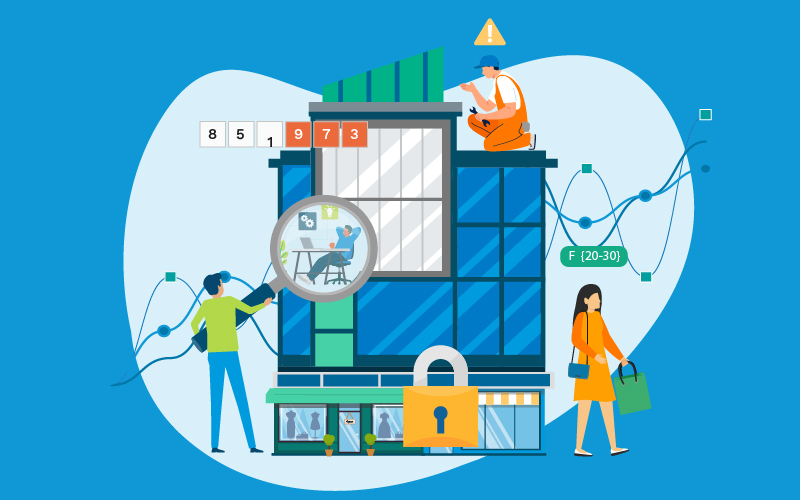The 5 must-have FM dashboards for smarter operations in 2025
Facilities management has evolved beyond simply keeping the lights on and the lifts running. In 2025, it’s about making smarter, faster decisions that shape the future of your operations. The secret? Dashboards that go beyond displaying data – they tell a story.
Voice of the Facility Manager Report 2025
Find out about the biggest challenges in FM, the latest tech trends and the future landscape for FM professionals

These are tools that consolidate everything you need to know in one place, transforming mountains of numbers into actionable insights. Say goodbye to endless spreadsheets and constant system-switching. With the right dashboards, facilities teams can achieve efficiency, sustainability, and strategic success.
Get an FM system with a difference
Transform your business with an FM ecosystem that brings together FM, Energy, IoT tech and AI powered data analytics all in one place.

Turning data overload into actionable insights
Let’s face it, we waste too much time gathering data. Studies show nearly 20% of our workweek is spent searching for information. For facilities managers, that’s valuable time that could be spent solving real problems.
Dashboards solve this by acting as your operational command centre. They provide real-time clarity on what’s happening and where attention is needed. Even better, modern dashboards don’t just look back at what’s happened, they anticipate what’s coming next. With AI and integration, they empower you to act proactively rather than reactively.
The dashboards that matter in 2025
Not all dashboards are created equal. Some are game changers, while others are, well, just pretty charts. Here’s a look at the dashboards that truly make a difference:
1. Supplier performance
Ever had a vendor let you down at the worst possible moment? A supplier performance dashboard monitors reliability, delays, costs, and compliance trends. For experienced FMs, advanced features like benchmarking against industry standards or predicting supplier risks (such as financial instability) can be game-changers.
Takeaway: Use this dashboard to optimise supplier contracts, identify reliable partners, and proactively manage risks.
2. Work order management
Tired of maintenance chaos? A work order dashboard simplifies tracking overdue tasks, recurring issues, and team performance. Advanced versions integrate predictive maintenance insights to highlight inefficiencies or recurring asset problems. Some even prioritise tasks based on impact, saving time and resources.
Takeaway: Harness predictive insights to prevent repeat issues and focus efforts where they’ll make the biggest difference.
3. Asset lifecycle
Every asset has a story, from installation to replacement. Dashboards that integrate IoT (Internet of Things) data can provide real-time health monitoring, triggering alerts before breakdowns occur. Scenario planning tools can help FMs compare the ROI of upgrades versus repairs, ensuring smarter investment decisions.
Takeaway: Combine IoT data and scenario analysis to maximise asset uptime and plan smarter investments.
4. Sustainability metrics
Tracking energy use and emissions is just the beginning. Advanced dashboards align with ESG (Environmental, Social, Governance) standards, monitoring metrics like water conservation and waste reduction while calculating the financial ROI of green initiatives.
Takeaway: Turn sustainability metrics into actionable business cases for leadership buy-in.
5. Budget and cost analysis
Budgets tell the story of your organisation’s priorities. AI-powered dashboards can uncover hidden savings by identifying underutilised resources or offering predictive insights into inflation, energy trends, or regulatory changes.
Takeaway: Optimise spending and adapt to challenges with predictive budgeting tools.
Bonus section – Emerging dashboards to watch
While the essentials are critical, forward-thinking FMs might also explore:
Space utilisation analytics – Real-time tools that track occupancy patterns, helping optimise layouts or consolidate underused areas.
Health and safety monitoring – Dashboards tracking air quality, cleaning schedules, and wellness outcomes are increasingly valuable in the post-COVID workplace.
What makes a dashboard truly great?
Dashboards in 2025 are more than just visually appealing – they’re transformative tools for smarter decision-making. The best ones function like a dialogue with your data. Pose a question like “Why are work orders delayed?” and get an actionable answer instantly.
Integration sets the best apart. By uniting data from multiple systems into a single, cohesive view, they eliminate inefficiencies and provide insights for decisions.
And let’s talk time. Automating data collation through these dashboards saves hours every week, freeing up FM teams to focus on what truly matters.
Facilities management – Smarter, faster, better
2025 isn’t about keeping up, it’s about setting the standard. The dashboards you use will determine whether you’re driving action or stuck in the passenger seat. They’re not just tools, they’re your secret weapon in creating a smarter, more efficient and sustainable future.
The future of FM is here, and it’s all about clarity, agility, and action. The right dashboards will change what’s possible.
Ready to see these dashboards in action? Watch our quick video to discover how smarter insights can transform your facilities management strategy in 2025. Watch Now
Empowering a Greener NHS: Why smart energy monitoring is key to decarbonisation and better patient care
Byline by Nicholas Hughes, overseeing Healthcare Solutions at MRI Software The NHS’s commitment to achieving net zero emissions is entering a decisive new phase. With NHS England requiring all Trusts and Integrated Care Boards (ICBs) to submit refres…

